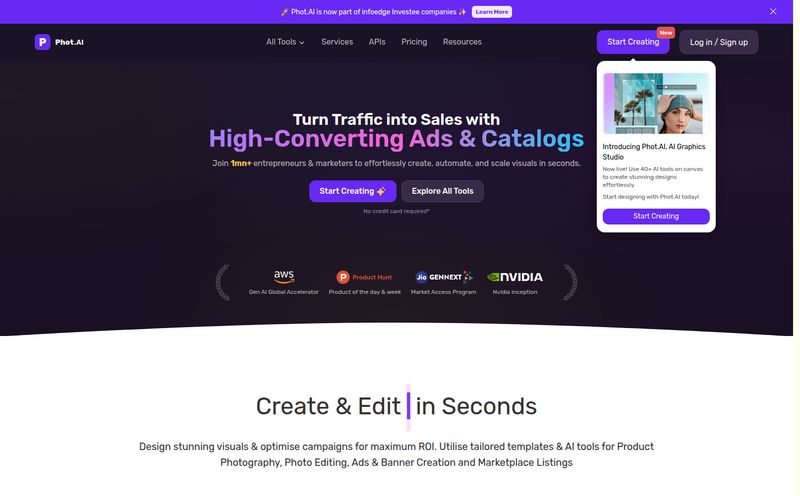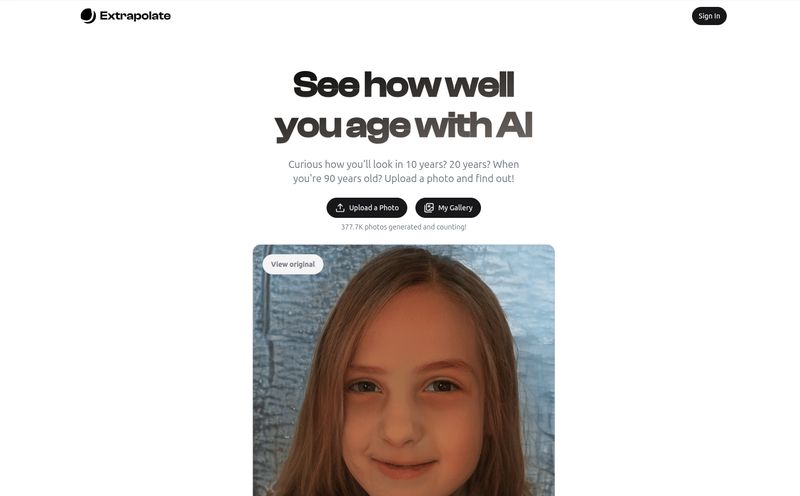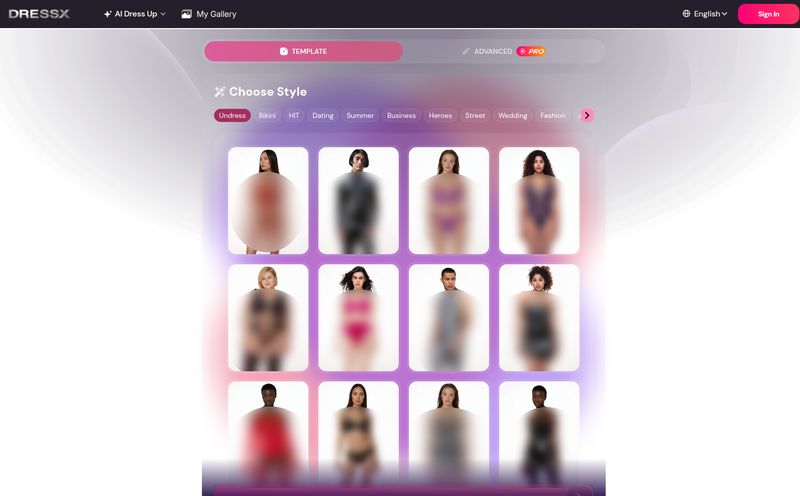We've all been there. You see a killer outfit online, you obsess over it for days, you add it to your cart, and you wait with bated breath for it to arrive. When it finally does, you tear it open... only to find it looks completely different on you than it did on the model. The fit is weird, the color washes you out, and now you have to deal with the soul-crushing hassle of a return. It's the perennial gamble of e-commerce.
For years, the industry has been chasing a holy grail: a way to bridge that gap between the screen and the mirror. Enter the rise of AI-powered virtual try-on tools. I've seen a bunch of them pop up, each promising to solve our online shopping woes. One that recently landed on my radar is Giydir. The premise is simple and seductive: use AI to see how clothes look on your actual body before you ever click 'buy'.
So, I rolled up my sleeves, ready to see if this was the solution I'd been waiting for. And, well, I have some thoughts.
So, What Exactly is Giydir Supposed to Be?
In a nutshell, Giydir is a platform designed to be your personal, digital dressing room. The idea isn't brand new, but the tech is getting smarter. You're supposed to be able to upload a photo of yourself (one where you're standing front-on, presumably), and then either upload photos of clothes or just paste in product links from your favorite online stores. The AI then gets to work, digitally 'dressing' your photo in the selected items. It's meant to give you a realistic preview, saving you time, money, and the aforementioned return-shipping-despair.
The Big Promise: The Upside of Virtual Closets
When these tools work, the benefits are pretty obvious. I mean, the sheer convenience is off the charts. Imagine trying on a dozen outfits from different stores in ten minutes without ever leaving your couch. No harsh fitting room lighting, no lines, no pressure. It's a game-changer for anyone who finds physical shopping overwhelming or just plain inefficient.
Then there's the freedom to experiment. I've always felt there are styles I'm curious about but wouldn't dare take into a real fitting room. A virtual try-on tool gives you a private, judgment-free zone to see if that bright orange jumpsuit actually works on you. (Spoiler: it probably doesn't on me, but a guy can dream). It's a playground for style, pushing you to discover new looks you might have otherwise ignored.
A Dose of Reality: The Potential Downsides
Of course, it's not all sunshine and perfectly rendered outfits. I've been in the SEO and digital trends game long enough to know that AI is often only as good as the data it's given. With virtual try-on, that means a few things.
The 'Garbage In, Garbage Out' Problem
The realism of the final image is heavily, and I mean heavily, dependent on the quality of the photo you upload. A blurry, poorly-lit selfie taken at a weird angle isn't going to give the AI much to work with. You'll likely get a distorted, cut-and-paste-looking result that's more comical than helpful. To get the best results, you need a clear, well-lit, full-body shot, which isn't always something you have on hand.
The Buffering Wheel of Doom
Processing these kinds of images takes serious computational power. For the user, this translates to needing a solid internet connection. If you're on spotty Wi-Fi, you might be staring at a loading icon for an eternity, which kind of defeats the whole 'convenience' aspect. It’s a small detail, but one that can make or break the user experience.
Okay, But Does Giydir Actually Work? My Attempt
This is the part of the review where I usually walk you through the user interface and show you some results. I had my photo ready. I had a few product links I was curious about. I navigated to the Giydir website, full of optimism and professional curiosity... and was greeted by this:

Visit Giydir
A simple, stark message: "Please check your network settings to confirm that your domain has been provisioned."
For those not steeped in tech jargon, this basically means the website isn't properly set up or is currently down. It's a digital ghost town. I checked my own network (it was fine), tried again, and got the same result. So, the short answer to "Does it work?" is, at the time of writing this, a resounding nope.
Now, I could be cynical about this. But honestly? It's kind of a perfect snapshot of the current state of many AI startups. The ideas are brilliant, the ambition is there, but the execution can be... well, a work in progress. It's the classic "move fast and break things" ethos in action. Perhaps they're pushing a major update. Maybe their server is having a bad day. Whatever the reason, my virtual try-on session was over before it began. It’s a little frustrating but also a very real part of exploring new tech.
Let's Talk Money: What's the Price Tag?
This is another mystery. Because the site wasn't operational, I couldn't find a pricing page or any information about potential costs. Typically, tools like this might have a freemium model — a few free try-ons to get you hooked, then a subscription for unlimited use. Or, they might be entirely free, aiming to make money through affiliate links with fashion retailers. For now, the cost of using Giydir is purely theoretical.
So, Is the Dream of Virtual Try-Ons Dead?
Not at all. Despite my experience with Giydir's currently inaccessible site, I'm still incredibly bullish on this technology. The potential is massive. Think about the impact on sustainability—fewer returns mean a smaller carbon footprint from shipping. Think about accessibility for people with mobility issues. The promise is real, even if some of the players are still finding their feet.
Some might argue the tech will never fully replace the tactile experience of trying on clothes, and they're probably right. But it doesn't have to. It just has to be better than the current system of guessing your size and hoping for the best. And I believe it will get there.
Frequently Asked Questions About Virtual Try-On Tech
What is Giydir?
Giydir is an AI-powered platform designed to let you virtually try on clothes. The goal is to upload a photo of yourself and see how different items from online stores would look on your body without having to buy them first.
How is a virtual try-on supposed to work?
Generally, you provide a full-body photo of yourself and a link or image of a piece of clothing. The platform's AI then analyzes the shape of your body and the garment's shape, draping the clothing onto your photo to create a realistic simulation of how it might fit.
Is Giydir free to use?
There is currently no public information on pricing. Many similar services offer a free trial or a limited number of free uses, but without access to the website, it's impossible to confirm Giydir's pricing model.
Can I use it for any clothing brand?
Presumably, yes. Since the platform is designed to work with product links, it should be compatible with most e-commerce websites. However, the accuracy might vary depending on the quality of the product photos on the retailer's site.
What should I do if the Giydir website is down?
Based on my experience, the best you can do is wait and try again later. It could be temporary maintenance or a technical issue they are working to resolve. You could also try to find a social media presence for the company to see if they've posted any updates.
Final Thoughts on Giydir and the Virtual Closet
So where does that leave us with Giydir? It's an exciting idea that, for me, fell flat at the first hurdle. It's a reminder that even the most promising technology is only as good as its uptime. I'm not writing it off completely—I'll definitely be checking back to see if the lights come back on. The concept is too good to ignore.
The journey to perfecting the digital fitting room is a marathon, not a sprint. While Giydir might be having a moment of technical difficulty, it represents a step in the right direction. For now, I'll stick to my measuring tape and my risky late-night shopping, but I'm keeping a hopeful eye on the horizon. The future is coming, it just might be temporarily offline.
References and Sources
- An interesting take on the market from Business of Fashion on why virtual try-on is a work in progress.



